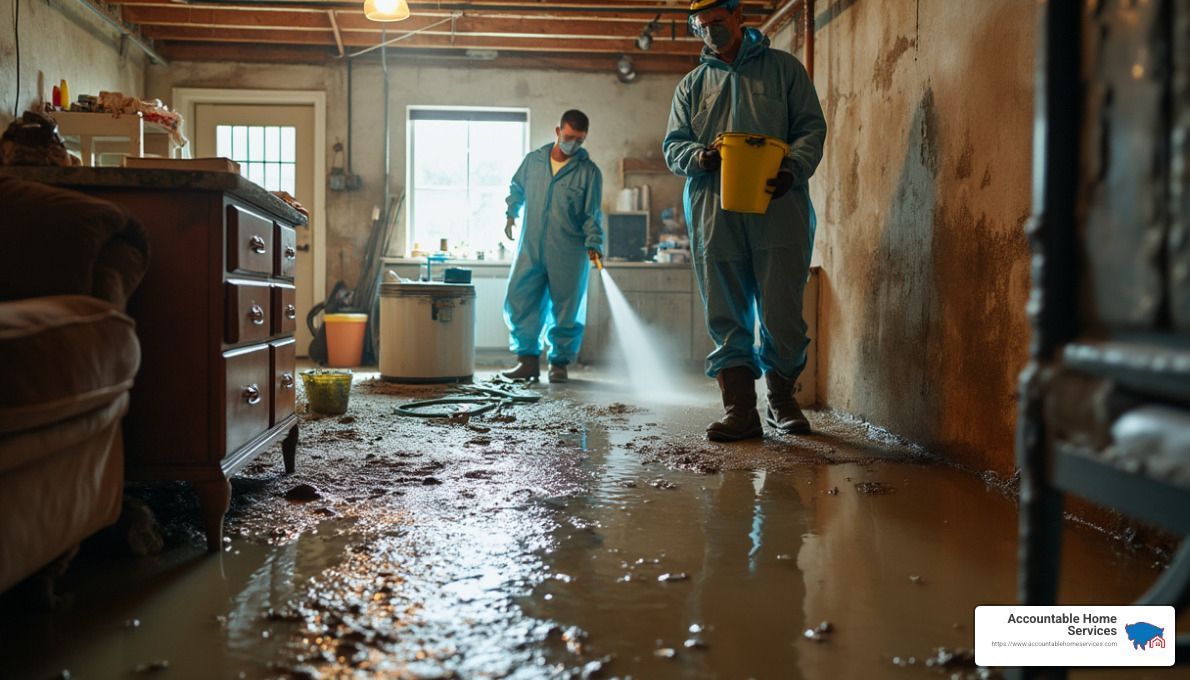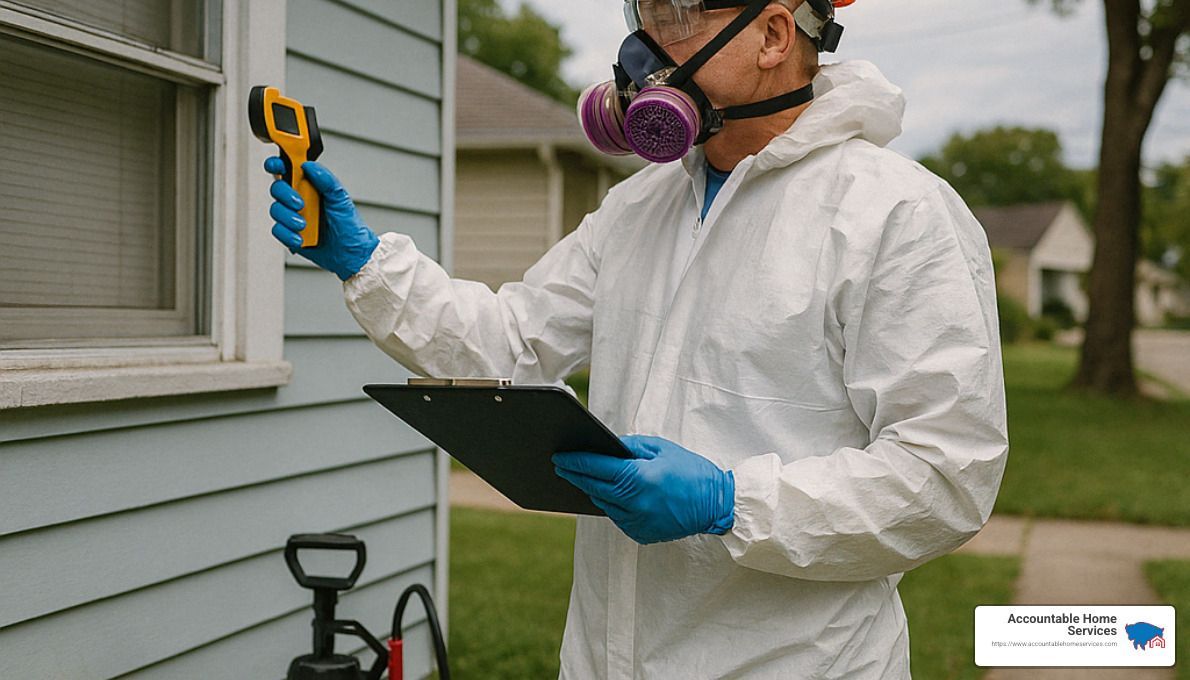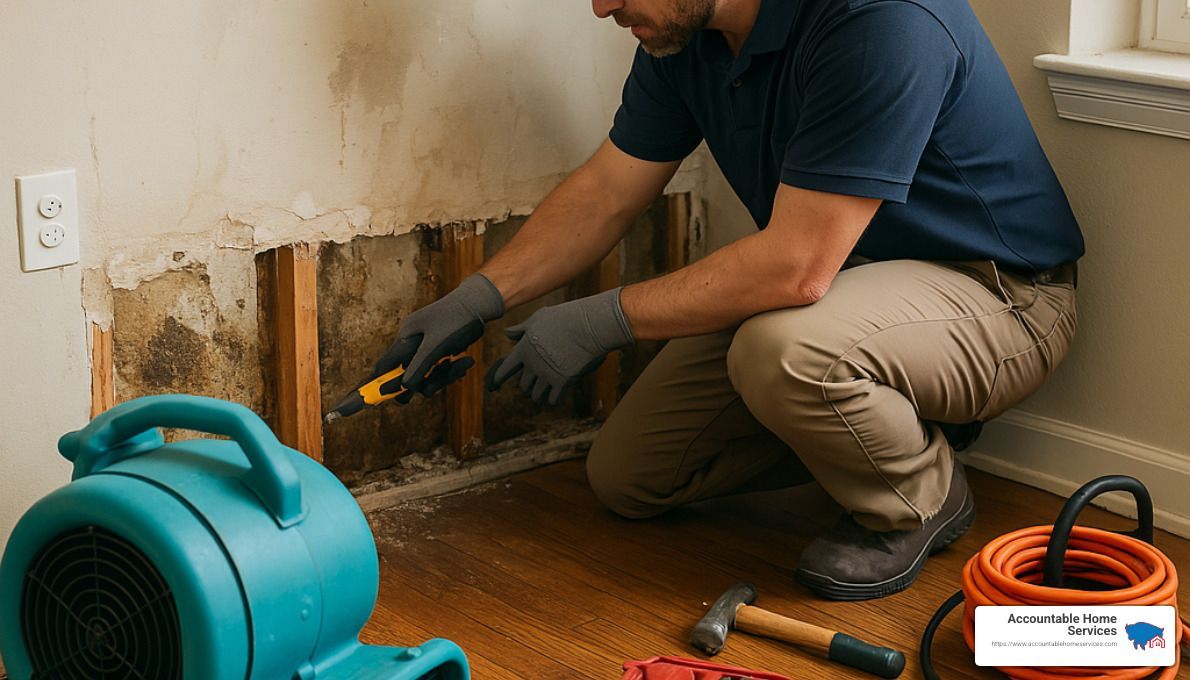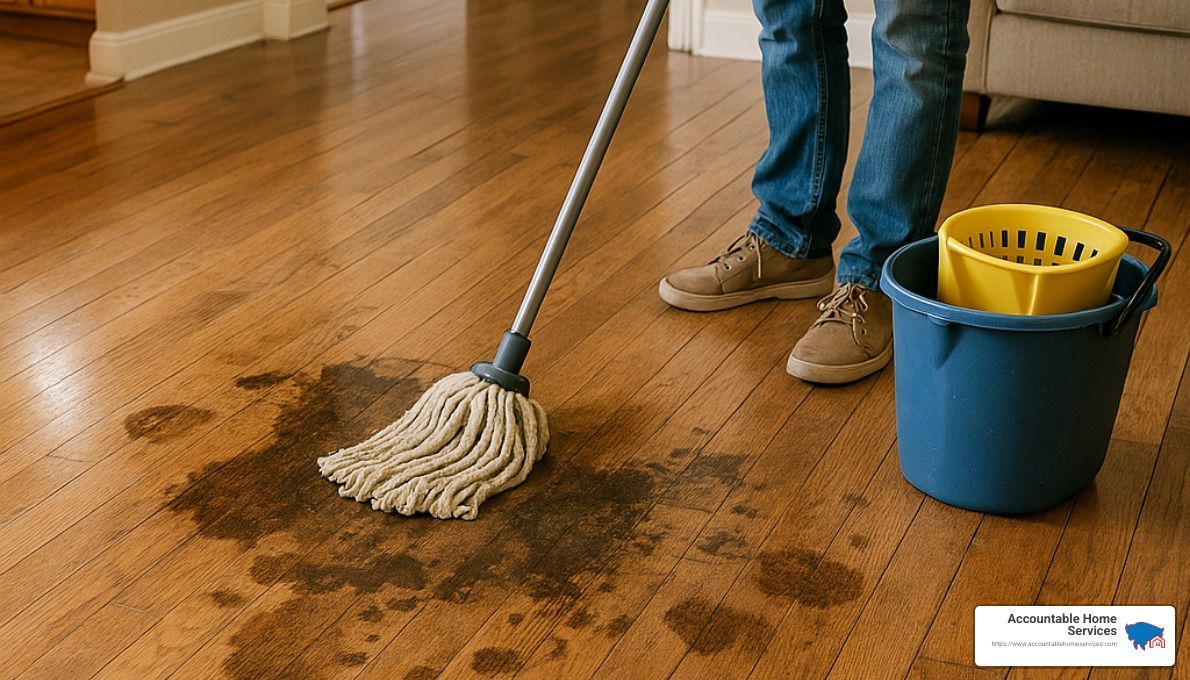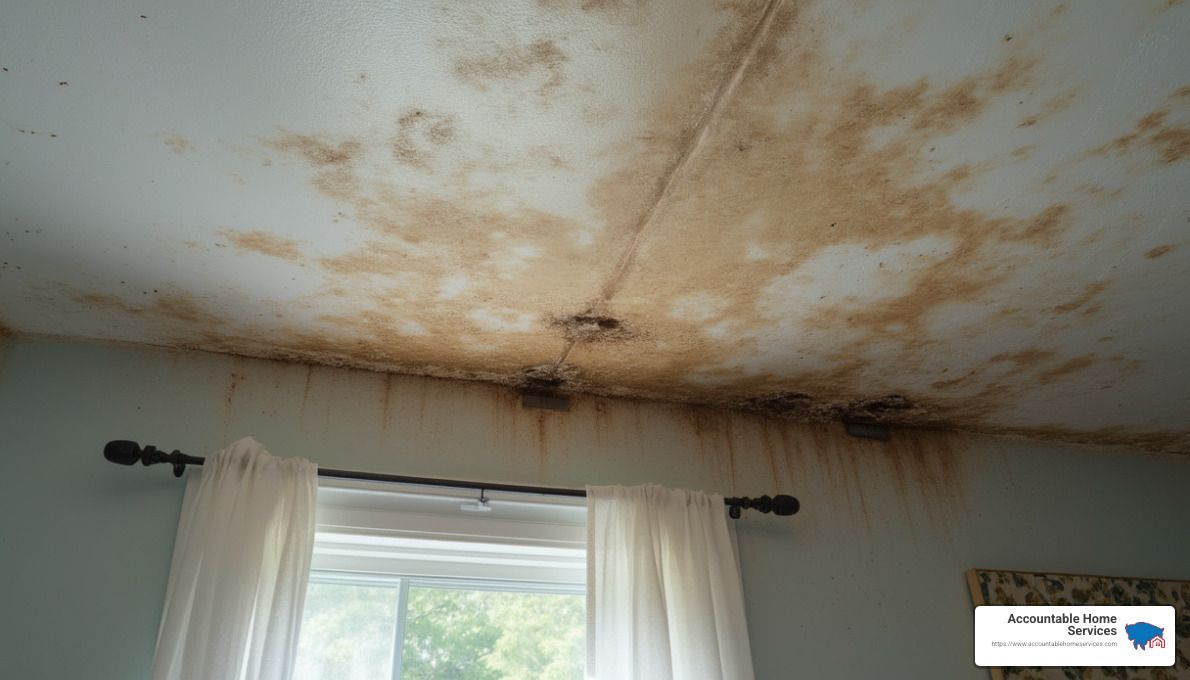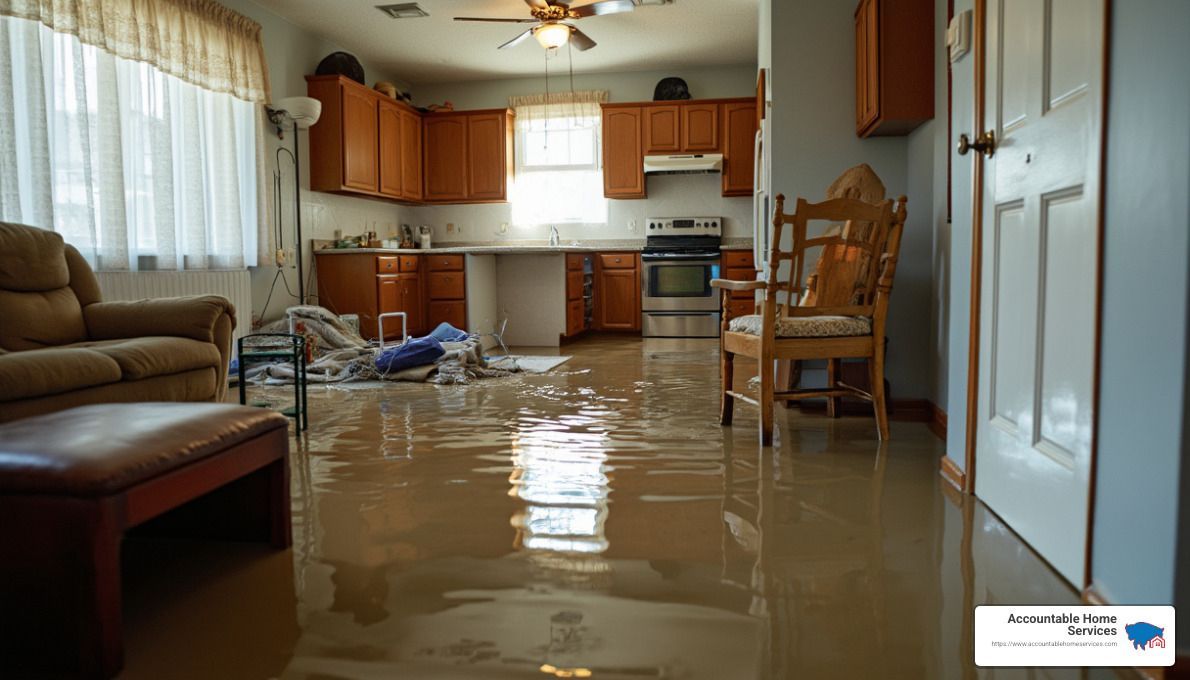Blog
Infrared scanning, also known as thermal imaging, is a powerful, noninvasive inspection technique that captures temperature variations across surfaces and objects. Primarily, it is used to detect issues such as hidden electrical faults, insulation gaps, and potential mechanical failures.
Key Benefits of Infrared Scanning:
- Early detection of equipment malfunctions.
- Prevention of costly breakdowns.
- Safety improvement by identifying potential fire hazards.
- Energy savings through the detection of insulation defects.
- Efficiency in maintenance operations.
Installing infrared scanning into your home maintenance routine is like giving your property a health check-up. It's a proactive approach to preserving your investment and ensuring safety. Especially relevant for homeowners in the Denver area, where prevention is extremely important given the varying climate conditions.
“With Infrared, it's typically a 5 to 1 ROI (return on investment). If a company does an IR Inspection, they're typically getting a 5X return by cost avoidance. Add in any lost time, lost product, or safety hazards, and it exponentially increases."- Excerpt from the Electrical Safety Podcast with Cody Jackson
I'm Mike Martinez, owner of Accountable Home Services. With over two decades of experience, my expertise in infrared scanning has helped countless Denver homeowners uncover hidden problems and improve their property’s efficiency. Our goal is to make your home not just safe and functional, but a haven of comfort and peace.
I invite you to continue exploring how infrared scanning can benefit you by reading on. We'll dig into its many applications and why it’s an essential part of caring for your home.

What is Infrared Scanning?
Infrared scanning is a cutting-edge technique that uses infrared radiation to visualize temperature variations on surfaces. It's like having a pair of super eyes that can see heat!
How Does It Work?
Infrared radiation is a type of energy that objects emit based on their temperature. An infrared camera captures this radiation and converts it into a thermal image, known as a thermogram. These images use colors to represent different temperatures, creating a heat map that highlights areas of concern.
Imagine looking at your home through a special lens that shows hot and cold spots. This helps identify issues like:
- Electrical faults that could lead to fires.
- Insulation gaps causing energy loss.
- Moisture accumulation that might lead to mold.
Why Is It Useful?
The magic of infrared scanning lies in its ability to detect problems without physical contact. This noninvasive inspection method is invaluable for spotting hidden issues early, saving homeowners from costly repairs down the line.
For example, in Denver's fluctuating climate, maintaining energy efficiency is crucial. Infrared scanning helps detect where heat escapes during winter or where cool air leaks in summer, allowing for targeted improvements.
Did you know? Thermograms can reveal temperature differences as small as 0.1°C, making them incredibly precise tools for diagnostics.

By using this technology, homeowners can ensure their property is not only energy-efficient but also safe from potential hazards. It's a smart investment for anyone looking to protect and improve their home.
Continue reading to find the diverse applications of infrared scanning and how it can be a game-changer for your property.
Benefits of Infrared Scanning
Infrared scanning offers homeowners a powerful tool for maintaining and improving their property. Here's how it can be a game-changer:
Early Fault Detection
One of the biggest advantages of infrared scanning is its ability to catch problems before they escalate. By spotting anomalies in temperature, it can identify issues like electrical faults or insulation gaps early on. This proactive approach allows homeowners to address problems before they become costly repairs.
Statistic: "With Infrared, it is typically a 5 to 1 ROI (return on investment), so if a company does an IR Inspection, they are typically getting a 5X return by cost avoidance."

Predictive Maintenance
Predictive maintenance is all about foreseeing potential issues and fixing them before they cause trouble. Infrared scanning excels here by providing a clear picture of the health of your home's systems. For instance, it can detect overheating connections in electrical systems, allowing for timely repairs and preventing unexpected failures.
Energy Savings
In a place like Denver, where temperatures can swing dramatically, energy efficiency is key. Infrared scanning helps pinpoint where your home is losing energy—like through poorly insulated walls or drafty windows. By addressing these issues, homeowners can significantly cut down on energy bills and make their homes more comfortable year-round.
Fact: "Energy savings through the detection of insulation defects" is one of the primary benefits of infrared scanning.
Safety Improvement
Safety is paramount in any home. Infrared scanning improves safety by identifying potential fire hazards, such as overheating electrical components or defective fuse clips. By tackling these issues early, homeowners can ensure their property is safer for their family.
Incorporating infrared scanning into your home's maintenance routine is a smart move. It not only protects your investment but also improves the safety and comfort of your living space.
Continue reading to explore the various applications of infrared scanning and see how this technology can benefit different aspects of your property.
Applications of Infrared Scanning
Infrared scanning is a versatile tool with a wide range of applications. Let's explore how it benefits different sectors:
Electrical Systems
Infrared scanning is invaluable for electrical systems. It helps detect overheating components like switchgear and distribution panels before they fail. By identifying these hot spots early, homeowners can prevent electrical fires and costly repairs. Regular infrared inspections are a proactive way to maintain the safety and efficiency of your home's electrical setup.
Building Diagnostics
When it comes to building diagnostics, infrared scanning is a game-changer. It can uncover hidden issues such as moisture intrusion, insulation deficiencies, and structural defects. By visualizing temperature variations, this technology helps pinpoint areas needing attention, ensuring your home remains in top condition. This is particularly useful in Denver, where weather conditions can impact building integrity.
Medical Imaging
In the medical field, infrared scanning plays a crucial role in imaging. In addition to home services, it's interesting to note its application in detecting temperature changes in the human body. This non-invasive technique aids in identifying inflammation and other health concerns, showcasing the broad utility of infrared technology.
Law Enforcement
Law enforcement agencies also benefit from infrared scanning. It assists in surveillance and search and rescue operations by detecting heat signatures, even in low-light conditions. This capability improves public safety and supports efficient law enforcement efforts.
Infrared scanning offers diverse benefits across different sectors. For homeowners, its primary value lies in maintaining and improving property conditions. Whether it's safeguarding electrical systems or diagnosing building issues, incorporating infrared scanning into your maintenance routine is a wise investment. Keep reading to learn more about how this technology works and why it's a must-have for your home.
How Infrared Scanning Works
Infrared scanning is an incredible technology that lets us see heat! It's like having a superpower to spot problems without touching anything. Here's how it all comes together:
Infrared Camera
The magic starts with an infrared camera. Unlike regular cameras that capture visible light, this one picks up infrared radiation—a type of energy that we can't see but can feel as heat. Every object emits this radiation, and the camera captures it to create a picture of temperature differences.
Thermograms
The images produced by the infrared camera are called thermograms. Think of them as colorful maps showing where it's hot and where it's not. In a thermogram, warm areas might appear in reds and oranges, while cooler spots show up in blues and greens. These images help us spot unusual heat patterns that could signal problems like electrical faults or hidden moisture.
Heat Map
A heat map is another way to understand a thermogram. It provides a visual representation of temperature across a surface. By examining the heat map, experts can quickly identify areas that need attention. For instance, a hot spot on a wall might indicate a leak or poor insulation.
Non-Contact Inspection
One of the best things about infrared scanning is that it's a non-contact inspection method. This means we don't have to touch or disturb anything to get the information we need. It's safe, fast, and doesn't interfere with your daily activities. Whether we're checking your home's electrical systems or looking for insulation issues, we do it all from a distance.
Infrared scanning makes it easy to spot potential issues before they become big problems. It's like having x-ray vision for your home, helping keep everything in top shape. Next, we'll dive into some common questions about this amazing technology. Keep reading!
Frequently Asked Questions about Infrared Scanning
What is an infrared scan?
An infrared scan is a noninvasive inspection technique that uses thermal imaging to detect heat variations on surfaces. This technology allows us to see temperature differences that are invisible to the naked eye. By capturing these variations, we can identify potential issues like electrical faults, poor insulation, or hidden moisture, all without touching or damaging anything.
How much does an infrared electrical inspection cost?
The cost of an infrared electrical inspection can vary based on factors like the size of your property and the complexity of the systems being inspected. Typically, prices range from a few hundred to over a thousand dollars. While this might seem like a significant investment, the cost benefits are substantial. Early detection of issues can prevent costly repairs, reduce energy bills, and improve safety, offering a strong return on investment.
Is an infrared scan worth it for a home inspection?
Absolutely! An infrared scan during a home inspection can reveal hidden issues that might not be visible otherwise. It can detect moisture behind walls, identify structural concerns, and even pinpoint areas of heat loss. This information is invaluable for homeowners, as it helps ensure the property is safe and energy-efficient. By spotting problems early, you can address them before they escalate, saving time and money in the long run.
Conclusion
At Accountable Home Services, we believe in going beyond the surface to ensure your home is safe, efficient, and comfortable. Our expertise in infrared scanning is just one of the many ways we provide top-notch home improvement solutions for the Denver Metro Area.
By integrating cutting-edge technology like thermal imaging, we can offer precise diagnostics and energy-efficient upgrades custom to your home's needs. Whether it's identifying hidden moisture, improving insulation, or ensuring electrical systems are functioning safely, our services are designed to protect and improve your property.
Our family-owned business prides itself on providing transparent communication and reliable solutions. With a focus on quality craftsmanship and customer satisfaction, we're committed to being your trusted partner in home restoration and improvement.
Ready to experience the benefits of infrared scanning for yourself? Learn more about our thermal imaging inspection services and schedule a consultation today. Together, we can make sure your home is not only a place of comfort but also a smart investment for the future.

